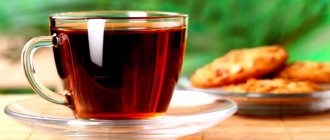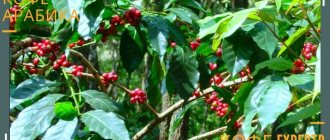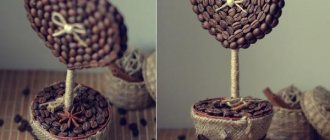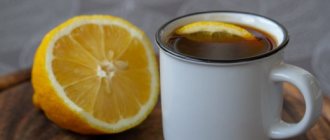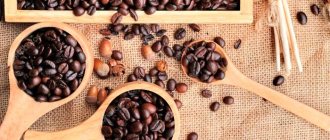Translation of an Australian study on the caffeine content of coffee prepared in different ways: espresso, cold brew, filter, moka and French press.
There are many inconsistencies in articles regarding the caffeine content of a cup of coffee. We wanted to get to the bottom of the truth, and with members of the Department of Chemistry at the University of Newcastle (Australia) we explored the five most common brewing methods:
- Espresso (most often baristas prepare it, because it is the basis for dairy drinks).
- Pour over (coffee is brewed by pouring it through a filter).
- Moka (geyser coffee maker).
- Cold brew (the longest method, in which extraction occurs not due to the high temperature of the water, but due to the infusion time - usually 8-12 hours).
- French press (a popular home brewing method that allows you to quickly and easily get a delicious cup).
To make the experiment as fair as possible, in all brewing methods we used one type of coffee, Colombia Excelso washed processing in a darker than medium roast (a similar variety is in our catalog under number 194), which we prepared five times with each method. This was necessary to take into account all variables and obtain averages.
Useful and harmful qualities of caffeine
If you drink in small quantities, it can have a positive effect on the human body. Caffeine in small doses increases physical and mental activity and improves mood. People involved in intellectual work, if they drink two cups a day, notice that they cope with tasks faster than their colleagues who do not drink this invigorating drink. American scientists have proven that caffeine is an excellent stimulator of neural activity, but it should not be abused frequently. Natural alkaloid (caffeine) can negatively affect health, especially for people suffering from gastritis, cardiovascular diseases, insomnia, and nervousness.
Caffeine is found in plants such as the coffee tree, tea, cocoa, mate, guarana, cola and some others.
How much caffeine is in different varieties
Coffee is like grapes - its taste depends on the composition of the soil in which it grew, climate, and growing conditions. The same variety can change its taste and aroma depending on the degree of roasting and grinding. Today, the Robusta coffee variety is the leader in terms of high caffeine content. Alkaloid levels reach 2.2%. If we compare it with Arabica, it contains only 1.2%.
Caffeine is one of the most widely and regularly consumed natural biologically active compounds, known since ancient times.
The level of caffeine cannot be determined by the taste, aroma, or bitterness of the drink. It is not possible to determine the amount of natural alkaloid using the senses. If the beans have been heavily roasted, the strength of the drink will be lower. This is due to the chemical process involved in roasting the beans. When heated during roasting of beans, the molecules of the stimulating substance are destroyed.
Coffee brewing method
If fried makes little difference, what about the cooking method? Does espresso have more caffeine than a mug of drip coffee?
The amount of caffeine extracted during brewing varies depending on the method. But again, it may not be what you think.
As a general rule, the longer the brewing method, the more caffeine you should expect per serving. The key here is that it is per serving.
According to Kicking Horse Coffee, one ounce shot of espresso contains about 40 milligrams of caffeine. A 340 gram drop has approximately 120 milligrams.
So, in comparison, espresso is much stronger (40 mg vs. 10 mg per 30 grams). But we don't typically consume 340 grams of espresso in one shot. This means that you will get more caffeine per shot in a drip cup than in a shot of espresso.
Cold brew coffee often contains more caffeine than drip coffee, in part because it is typically made with a higher coffee/water ratio. This may depend on how you brew and how much you dilute it, which can vary a lot from person to person.
When it comes to your brewing method, you should probably still make a decision based on your taste preferences. And remember, a double shot of espresso contains about the same amount of caffeine as an 8-ounce cup of coffee.
Rating by amount of caffeine
The most caffeinated beans grow in certain geographic locations. The well-known Arabica variety, brought from South America, a drink rich in taste and aromatic qualities, may not be at all strong. Brazilian and Colombian varieties lead the world market. The drink from these countries has medium strength and a mild taste. Beans from the Middle East and Africa have the highest levels of caffeine.
Caffeine gets its name from one of its main sources - coffee beans.
Robusta contains the most caffeine
It has a second name - Congolese. It contains the highest amount of caffeine from 2 to 4%. The taste of this drink is rich and the aroma is pronounced. It is consumed in a mixture with other varieties due to the presence of bitterness, but this drink is also popular in its pure form. Robusta translates to “strong.” And this name fully corresponds to it - it can germinate where Arabica does not take root.
Robusta is the default commercial coffee
When this variety grows, its leaves are large and its flowers have a white-pinkish color. The grains ripen up to 12 months. They are larger in size than Arabica beans by 5-7 millimeters. Those who have tasted it note the bitterness in the taste of the drink. However, there are connoisseurs of this coffee - tart, bitter and even spicy.
Monsoon Malabar
One of the varieties of Arabica is unlike any other variety. The coffee does not have bright richness, sourness or fruity notes. Despite its “smooth” taste, Malabar is memorable, with its own twist. This coffee taste is often found in the East in the countries: Egypt, Turkey, Greece and Israel.
The harvested coffee beans are exposed to monsoon rains and winds for three to four months, causing them to swell and change their flavor characteristics.
The monsoon drink acquired such a taste thanks to a unique processing technology. According to legend, when Europeans arrived in India, they supplied coffee to their ports. The grains took months to reach Europe and had time to become damp due to humid monsoon weather changes. The grains became yellow in color and changed their taste. In southwest India these days, this technology for aging grains is used in specially equipped warehouses.
Sulawesi Thoraya
Indonesian Sulawesi Toraja is freshly roasted coffee beans, which produces a strong, aromatic drink with a fruity flavor and a high content of natural invigorating alkaloid. The artificial aging technique is used for this variety, as with the previous monsoon Malabar.
Coffee from the island of Sulawesi has a wonderful aroma and rich bouquet
Kubito
The name of coffee varieties brought from Cuba. The content of natural alkaloid in them reaches 2.5%. The qualities of the drink from Cuban freshly ground grains acquire a fruity note, a tart, burning taste and a rich aroma. The Cuban drink is usually drunk from small cups - this is enough to cheer you up.
Beans and ground Cuban coffee of elite varieties
Yemen Moko
The African strong coffee variety was one of the first brought to Russia. 100% Arabica beans are also prized by drink lovers around the world. Yemen Moko is grown in northern Africa at an altitude of 200 meters above sea level. The grains are collected by hand and dried on the roofs of houses. The harvest is low, up to 8 thousand tons of grains, so the price for Yemen Moko is high. Its unique taste is unlike any other. You can feel fruity and wine notes in it.
Yemen is home to some of the best coffee in the world.
Table of caffeine content in natural coffee in mg
Approximate caffeine concentration per 200 ml coffee:
- Mocha Ethiopian and Santos 189 mg;
- Costa Rica and Peru 200 mg;
- Arabica up to 210 mg;
- El Salvador and Guatemala up to 220 mg;
- Meleber and Colombian varieties up to 230 mg;
- Varieties from Haiti 235 mg;
- Robusta from 380 to 400 mg.
Caffeine content in different drinks
Nitro brew coffee
It is unlikely that you drink this drink every morning, but it is worth mentioning - this is an unusual coffee that is not prepared everywhere.
Nitro brew is a bubblier version of the previously described cold brew. It is cooked in a barrel, which is then infused with nitrogen to produce a sweeter, creamier flavor without the added sugar or cream.
Nitro coffee is one of the most powerful sources of caffeine. One serving contains 215 mg of caffeine.
The main difference from cold brew is its texture - nitro brew boasts a rich body and foam that can be compared in texture to beer.
Amount of caffeine in one cup of instant coffee
This coffee contains a natural invigorating alkaloid, but there is not much of it. By the way, strong black tea is stronger than instant coffee. Ground real coffee can contain up to 4% caffeine, but it is almost impossible to find such a product on supermarket shelves. When producing ground coffee, a strong coffee concentrate is sprayed into a chamber filled with nitrogen. The drops freeze on the fly and coffee granules are formed. They contain up to 45 times more caffeine compared to ground coffee. Synthetic caffeine can be more energizing and energizing than coffee blends or Arabica coffee. Also, unscrupulous manufacturers may mix ground coffee with chicory.
The discovery of coffee dates back to approximately 850 AD. e.
Summer coffee drinks
The list of such drinks includes summer lattes, cold frappe, various coffee smoothies, and other experiments with espresso and milk, cream and ice cream. These drinks are popular during hot weather. They usually include one shot of espresso, ice or ice cream and some additives to taste (candy or chocolate, for example). When you're craving a midday treat, creamy, icy drinks like these are just the thing.
Although it is worth noting right away that this is not the healthiest choice, you can treat yourself to them from time to time. The classic summer latte or Frappuccino served in coffee shops contains about 65 milligrams of caffeine.
How to make Frappuccino at home
How to make a summer latte
Decaffeinated ground and bean coffee
Coffee that has been processed to remove the natural alkaloid caffeine is called decaffeinated. It will not be possible to completely remove caffeine from the drink to preserve its taste and aroma, but it will contain a small amount of it. As a result, the percentage of caffeine in 200 ml of drink will be only 0.1% or 80-100 mg. The benefit of this coffee is that it can be drunk by people for whom caffeine is contraindicated. Diabetics, pregnant women, and people with heart and vascular diseases can afford one or two cups of decaffeinated coffee.
Initially, not a decoction of roasted beans, but directly raw coffee berries were used as a tonic.
What don't we know about coffee?
As already mentioned, coffee is one of the drinks that cause persistent addiction. Some people cannot limit themselves to 1-2 cups a day, so they start drinking it in unlimited quantities.
As already mentioned, at first you will feel cheerfulness, a surge of strength and crazy activity. But then your health will begin to deteriorate due to excessive consumption of coffee drinks.
Characteristic symptoms:
- excessive fatigue;
- drowsiness;
- constant weakness;
- headaches of varying intensity.
You should drink no more than two cups of coffee per day. Otherwise you won't feel very good. But that is not all. Caffeine promotes the active removal of calcium from the body, which can result in the development of osteoporosis.
Important! If you drink coffee daily, be sure to drink at least one glass of pasteurized cow's milk to replenish your calcium supply.
Due to calcium deficiency, bones become brittle and cracks may appear in them. It is worth noting that caffeine can cause harm not only to bone tissue. The plant alkaloid also has a negative effect on the heart muscle. If you drink your favorite drink in excess of the prescribed amount every day, then over time your heart will be exhausted, which increases the risk of developing heart attacks and strokes.
And in general, some people compare such a potion to a drug, since it creates a persistent addiction.
How to replace coffee when giving up caffeine
The most common way to replace your usual cup of coffee in the morning is black leaf tea. The tonic component in this drink reaches up to 80 mg. But in tea, caffeine is in a bound state, and in coffee it is in a free state, which explains the tonic effect. Green teas are no less saturated with caffeine - 90 mg of caffeine per 300 ml of drink. You can achieve the effect of vigor and enhance brain function by drinking 3 cups of black or green tea. Invigorating products also include: ginger, cocoa, ginseng, chicory, masala 380 to 400 mg.
Caffeine has scientifically proven advantages and disadvantages, as well as side effects. If you drink no more than three cups of strong coffee a day, it will not cause harm to your health.
Coffee connoisseurs will also be interested in learning about the preparation of mochaccino, amaretto, mocha and raff coffee. Coffee with cola, marshmallow and fashionable frappuccino will surprise you with their unusual taste. And lovers of the classics will like espresso, Irish and Viennese coffee.
Macchiato (latte macchiato)
From Italian “latte” is translated as “milk”, so if you say “latte” in a cafe in Italy, they will simply bring you milk, but in order for you to get that same cafe drink, you should say “latte macchiato”.
From Italian “macchiato” translates as “spotted”. This means that you froth warm milk and add a shot of espresso, which means you "leave a coffee stain" on the milk. You can add more espresso if you want to add more bitterness to the milk drink.
Like espresso, this drink contains 75 mg of caffeine. To give the drink even more energy, you can add caramel or vanilla syrup to it, creating a caramel or vanilla macchiato.

